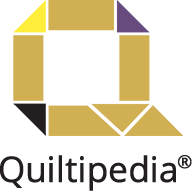Who is Margaret Chula?
For most of my life I have used the thrill of adventure to expand my mind and overcome fear. I grew up in New England on my grandparent’s eighty-acre tobacco farm on the Connecticut River and spent most of my time outdoors playing in the woods and meadows. I read books while perched in trees and, when I began to write poetry, it was about animals. My favorite books were by the nature writer Thornton Burgess: Reddy Fox, Sammy Jay, Billy Skunk. In fifth grade my teacher had an exhibition of my book reports, each one illustrated with the appropriate animal. ‘You’re going to be a children’s book illustrator,’ she predicted.
At age ten I won a poster contest for Drink Milk Week. My poster showed a family sitting at the table drinking milk and under the table a kitten drinking from its own bowl. Next to the illustration was a poem, which I’ve lost, but I’m sure it rhymed. I won first prize and a hairdryer. A hairdryer was a big deal in the 1950s, and my mother was very proud of me.
As it turned out, I didn’t become an artist, but a writer. My coming-of-age poems were tirades against God and death. When I was twenty-one, I boarded a plane for the first time and flew to London on a secretarial exchange program. I used my earnings to travel to France and Spain and then hitchhiked back to England. In 1971, looking for more adventure, I moved to northern California where I worked as a waitress, an artist’s model, an amaneunsis for a children’s book author, a nursery school teacher, and a research assistant at the Institute for the Future. I also met my future husband.
In 1977, John and I embarked on what turned out to be a three-year odyssey, traveling from England to the Greek Islands and then overland through Asia. We bumped along on the back of a pick-up truck crossing Afghanistan from Herat to Masar-i-Sharif to Kabul, chanted inside the Taj Mahal on a full moon night, trekked in the Everest region of Nepal, and undertook a two-week silent meditation in a Sri Lankan monastery. In Southeast Asia, we hiked to the villages of Thai hill tribes, were the guests of former headhunters in Borneo, and lived in a hut without electricity on Pilau Tioman in Malaysia.
After two years of rough travel, we decided to settle in Peliatan, Bali, where we lived in a bamboo pondok on a Balinese artist’s compound. Every day for nine months Sangayu Ketut Madra would come to my house to teach me traditional Balinese dance. Afternoons I would hop a ‘bemo’ to Mas to learn mask carving from Ida Bagus Anom. John learned how to play the gangsa (a type of metallophone in the gamelon orchestra) and studied cultural anthropology. Nearly every night, we’d don Balinese clothes and attend a festival in a small village.
In 1980, we returned to the U.S. to touch base with family and friends before deciding where to go next. Although we had spent weeks and even months in the countries we visited, we wanted to live in another culture for an extended period of time, while earning a decent living. In June, we embarked for Japan and quickly found a traditional house to rent on the outskirts of Kyoto. I was offered teaching positions at Doshisha Women’s College and at Kyoto Seika University, where I taught twelve creative writing and English classes a week. For relaxation, I’d get on my motorbike and head up into the mountains to meditate in Buddhist temples and write haiku. I also studied ikebana (flower arrangement) and woodblock printing. Several of these experiences are described in Tales of a Paper Lantern: Seasons in a Japanese House, published in The Unswept Path (White Pine Press, 2005).
After twelve years in Japan, John and I returned to the U.S. and rented a house on a large estate in Portland, Oregon. We established Katsura Press and, working together on design and content, published my first collection of haiku. Grinding my Ink received the Haiku Society of America’s Merit Book Award and is in its third printing. This Moment, a collection of tea-ceremony haiku, has received acclaim from tea masters in Japan and the U.S. In Shadow Lines, Rich Youmans and I introduced a new literary form combining traditional renku (linked verse) with haibun (prose/haiku). Shadow Lines received an HSA Book Award and is used as a model for teaching Japanese poetry in Portland schools. In 2001, White Pine Press published Always Filling, Always Full. Jane Hirshfield describes the tanka as ‘concise, moving, alive perceptions of the wide range of human feelings amid the common events of our lives.’ The title for The Smell of Rust was inspired by John’s photograph that graces the cover—a rust-colored wall in downtown Portland. My most recent book is a seven-year collaboration with quilt artist Cathy Erickson on the topic of Japanese Americans in internment camps during World War II. What Remains details their lives through poems inspired by readings, archival photographs, and interviews with Japanese Americans. Each poem is written in the voice of a different person. Cathy’s quilts echo the emotions and experiences of Japanese Americans through color, design and texture.
John and I have lived in Portland since 1992. I love the natural beauty of the landscape and the Portland Japanese Garden, which we’re both actively involved in. I am also grateful for the support of the community of poets, particularly my two writing groups, the Pearl Poets and Word Sisters.









